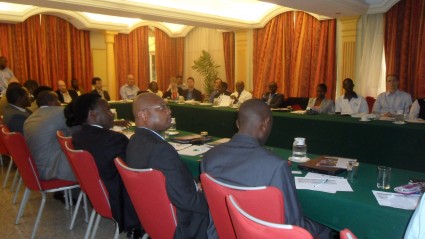An Emerging Platform: From Money Transfer System to Mobile Money Ecosystem
Editor’s Note: This post was co-authored by Clara Veniard, of the Bill & Melinda Gates Foundation’s Financial Services for the Poor initiative.
Networks are powerful tools. In the past, the emergence of canals, railroads, electricity, telecommunications and the Internet provided new ways of moving people, goods, energy or information, with transformational effects on business models and the economy. One of the more powerful aspects of networks is that they often form platforms that catalyze interactions between parties that might never have come together otherwise, sometimes creating new markets in the process. Roads connect workers to offices and sellers in one area to buyers in another, electric grids connect power generators and consumers, and the Internet connects just about everyone to everyone else.
In a recent piece, researched and written in collaboration with Bill Maurer, head of the Institute for Money Technology and Financial Inclusion at UC Irvine, and Phillip Machoka at the United States International University in Kenya (Kendall, Machoka, Maurer, and Veniard (2011)), we find that mobile money is becoming an infrastructure backbone connecting clients with myriad financial service providers in a way that may transform the Kenyan market.
In Kenya, mobile money (especially Safaricom’s M-PESA) has created a dense network of 23,000 retail points where clients can convert between cash and electronic value. Mobile money also allows clients to send the e-value to others on the system. These two features comprise the core functionality of a payments platform and the fact that over 13 million clients (more than 60 percent of Kenyan adults) are on the system is enticing all kinds of companies to join, including most of the retail financial sector.
(Above: A Gates Foundation event in Nairobi for some of the innovative firms cited in the paper. Photo credit: Malorie Clemens, program assistant, Financial Services for the Poor).
Our investigation documented over 90 financial institutions – from small microfinance institutions and savings and credit cooperatives to large banks and insurers – that are adding mobile money as a service delivery channel, and zero that were not. A number of new entrepreneurial ventures and products are operating with purely mobile money-based business models for pensions, health savings, micro-insurance and micro-credit (including a virtual microfinance institution called Musoni that is operating only through mobile money). We also spoke to a number of information technology companies specializing in mobile money integrations who tell us there is growing demand from all corners of the financial services industry to connect to mobile money.
Companies using M-PESA and other mobile money services are adopting the platform to expand geographic outreach and transact with new market segments (including the rural and poor populations) more cheaply, quickly and reliably than before. According to companies interviewed for the research, outsourcing transactions reduces providers’ costs of handling cash and frees up staff time to focus on sales and other value-added tasks. In addition, mobile money’s accessibility drastically reduces the time and money consumers spend reaching financial services providers-a value add of interest to poor consumers who typically are not located in close proximity to financial service outlets. Together, these factors allow consumers to make more frequent, small value transactions they otherwise could not or would not do. Although we didn’t find evidence that the poor had yet been reached by financial services providers in large numbers, many poor-focused financial service providers are jumping on the platform and research by Jack and Suri (2010) shows over 50 percent of poor, unbanked, and rural populations use M-PESA. Thus, we believe it is only a matter of time before many if not most poor households are using the platform to access financial services.
After speaking with a wide array of market players, we believe that mobile money has the potential to reshape the landscape of retail finance in Kenya by creating a new platform to bring together poor clients with financial services providers at greatly lower costs per transaction than legacy channels. However, significant challenges remain to increasing the number and variety of services available over the mobile money platform, and in particular to connecting to the poor. Although M-PESA is a lower cost alternative for financial service providers collecting or disbursing funds, companies in Kenya complain about M-PESA’s cost of transactions as well as integration costs and poorly performing Application Programming Interfaces (APIs). Financial service providers also face the challenge of building and maintaining client relationships in a more complex distribution arrangement where consumers may now have most of their interactions with third parties (agents).
While these challenges will not stop mobile money from having large impacts on the market – many of which should benefit the poor – the price of transfers (approx $0.40 US) in particular will limit the usefulness to poor people from transaction-intensive applications like daily (or even weekly) savings. For these types of services to be cost-effective for poor clients, mobile money transfer fees will have to drop. There are a number of factors which lead us to believe M-PESA (the overwhelming market dominator) will drop its fees eventually, and that many service providers may start to absorb the costs on behalf of clients, making an even greater array of services feasible, but that’s a subject for another post …
Please like NextBillion on Facebook and follow us on Twitter
- Categories
- Uncategorized

